|
|
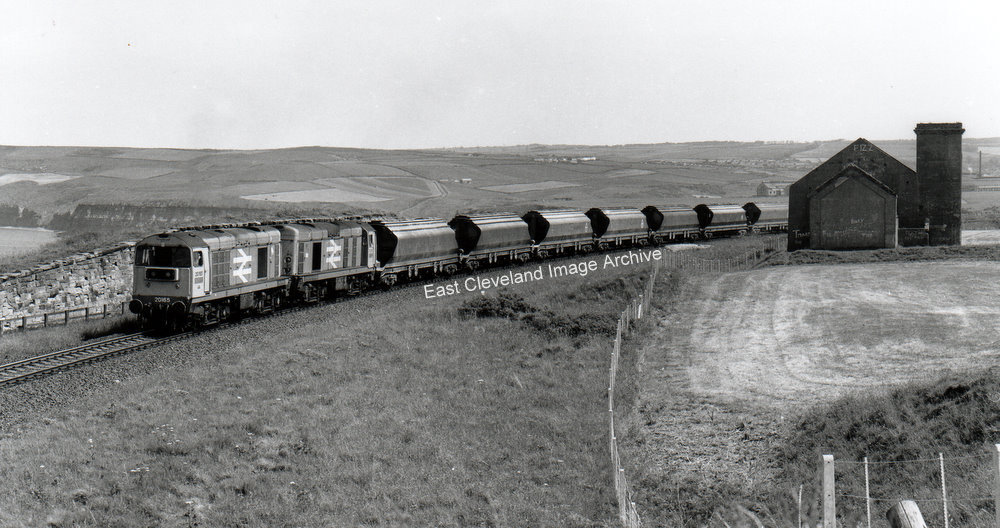
This looks a very modern photograph, about mid-1980’s we’re informed. The locomotives are BR Class 20s, 20165 (from 19878 till 1980 named ”Henry Pease” – how ironic!) and possibly 20118 (latterly named ”Saltburn-by-the-Sea”) – they typically operated ”nose-to-tail” as in this image. With these big arrows they could have been blue with yellow ends, or, even later, grey with yellow ends. On the right of this image is the Guibal fan house at the base of Warsett Hill, Brotton; the only surviving remnant of the Huntcliffe Ironstone Mine.
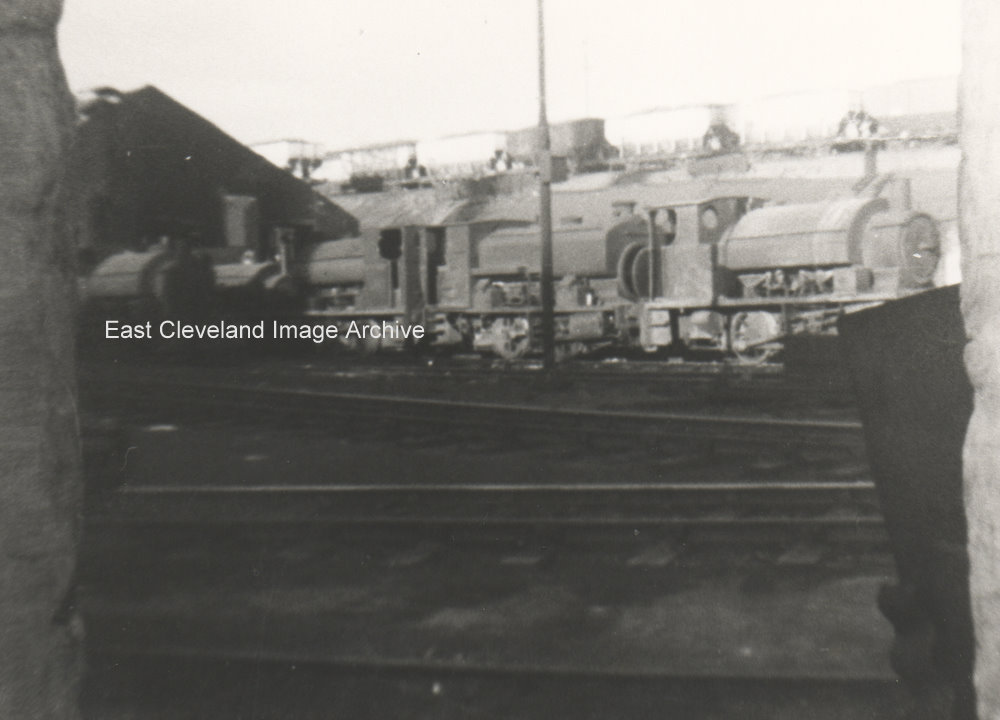
This is a photograph of the old engine sheds at Skinningrove (please correct us if we’re wrong!). The second small ”saddle-tank” loco from the left is the famous Minnie, so loved by all at ”the ’Grove”.
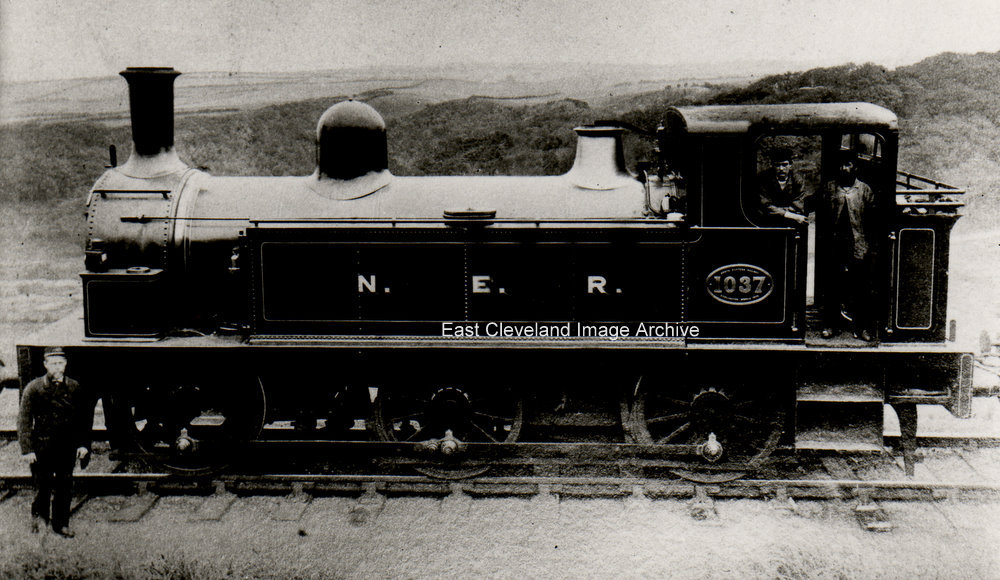
The proud loco men pose for their photographs with their brand new locomotive. The NER insignia being for the North Eastern Railway which became one of the component companies of the London and North Eastern Railway. This is a late Victorian image – I wonder if this is one of the locomotives that used to operate on the Skinningrove ”Z”?
Geoffrey Allen tells us: ”The loco is a class 1037 0-6-0T built at Darlington Works in 1876 one of a class of four specially built in 1876 for the Skinningrove Zig Zag. As pictured it is not new, but as rebuilt in the early 1890′s. The last of the class to work on the Zig Zag was No.1294 withdrawn from Carlin How shed in 1910. This class replaced the 1866 built Class 1196 0-6-0ST’s on the Zig Zag which at 6 tons heavier caused track damage. These were subsequently rebuilt from 1876 as 0-6-0 Tender engines and as rebuilt lasted until 1910.”
Many thanks to Geoffrey Allen for that update.
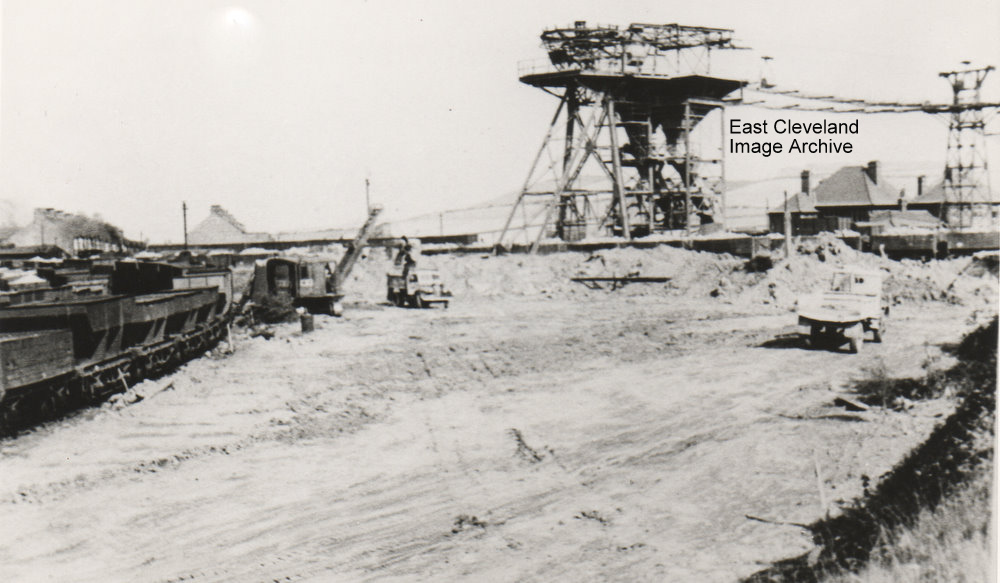
Based on a possible recognition of ”the buckets” in this image, it was wondered if this was the construction of the new road into the site; it was adjacent to the aerial rope-way and the stanchions remained as a lighting column after completion of the road. Now known to be the work undertaken by Wimpeys in August 1949.
Image and confirmatory information courtesy of the Pem Holliday Collection.
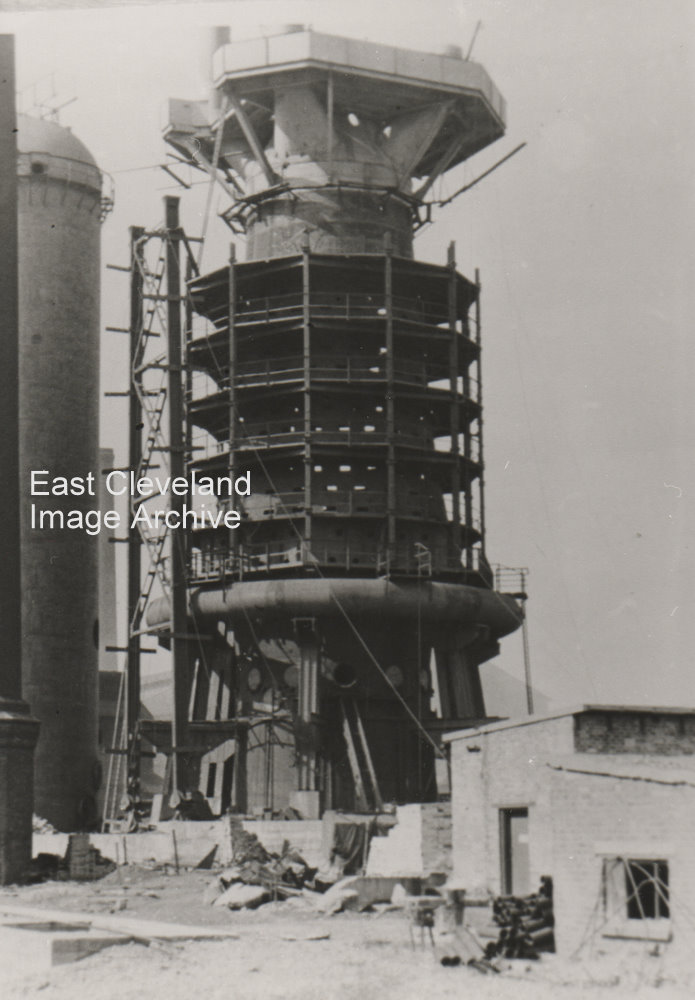
The Archive believed this was the building of No. 5 blast furnace and since confirmed by Eric Johnson; it looks strange without it’s clothes on! Arthur Ormrod tells us: ”The tall cylinders then would be the ”Cowper stoves, in which cleaned blast furnace gas is burned and used to heat the incoming cold blast, which then leaves as hot blast. These regenerative heat exchangers were invented by Edward Cowper in 1857 and are still used in blast furnace plants today.” Half-way along this bank of units was a long pipe ending in a thin rubber pipe and daily a sampling of the blast-furnace gas to test it for calorific value (among other things) was undertaken.
Many thanks to Eric Johnson and Arthur Ormerod for the updates.
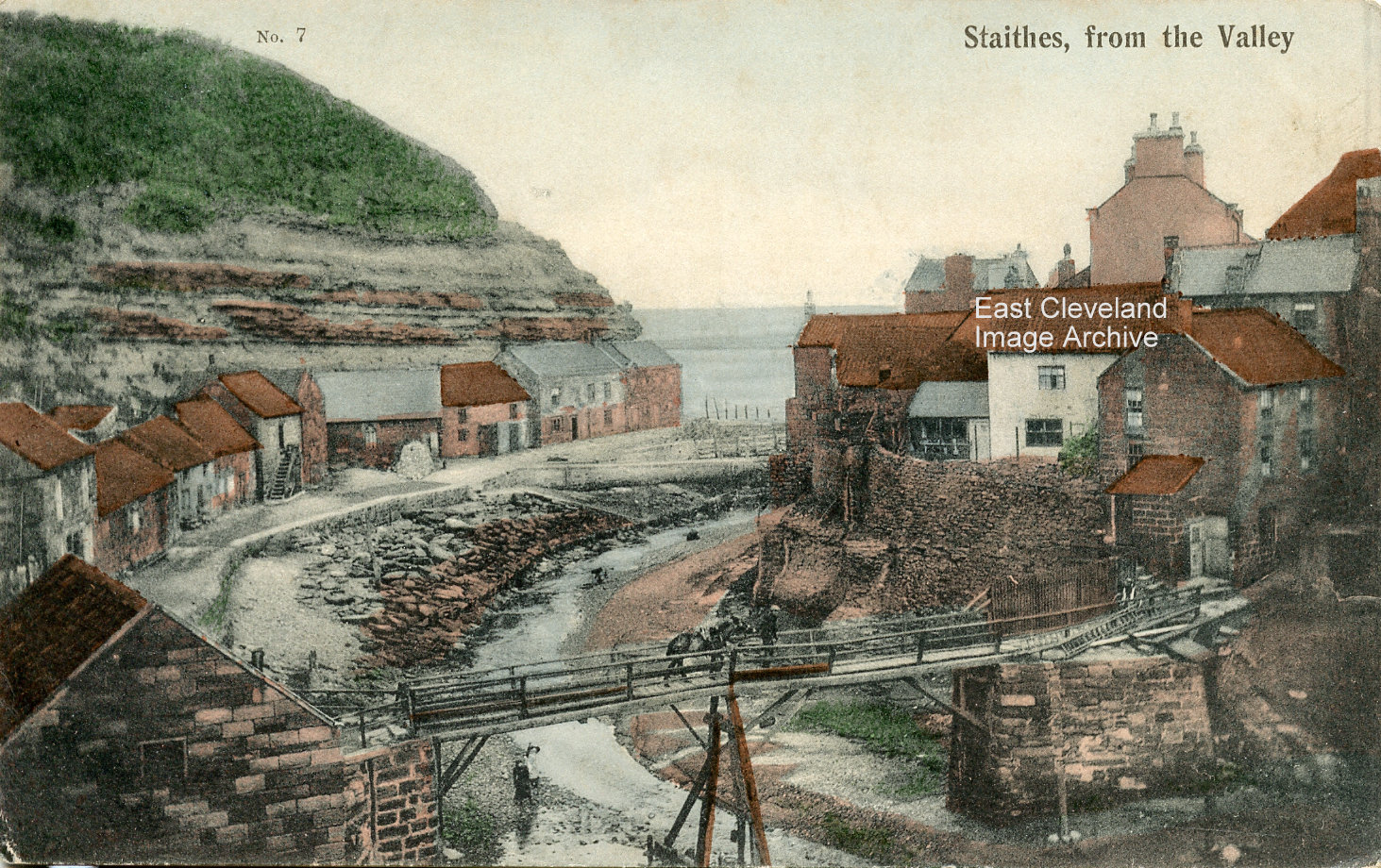
An artists dream picture; Staithes on the right and Cowbar on the left with the foot bridge in the foreground with a man and his horse crossing. This view of the footbridge across the beck with Cowbar Nab in the back ground, must have been replicated many times. The hand tinting shows to good effect particularly in the roofs of the cottages, this image is from the Phoenix postcard series by Brittain & Wright of Stockton.
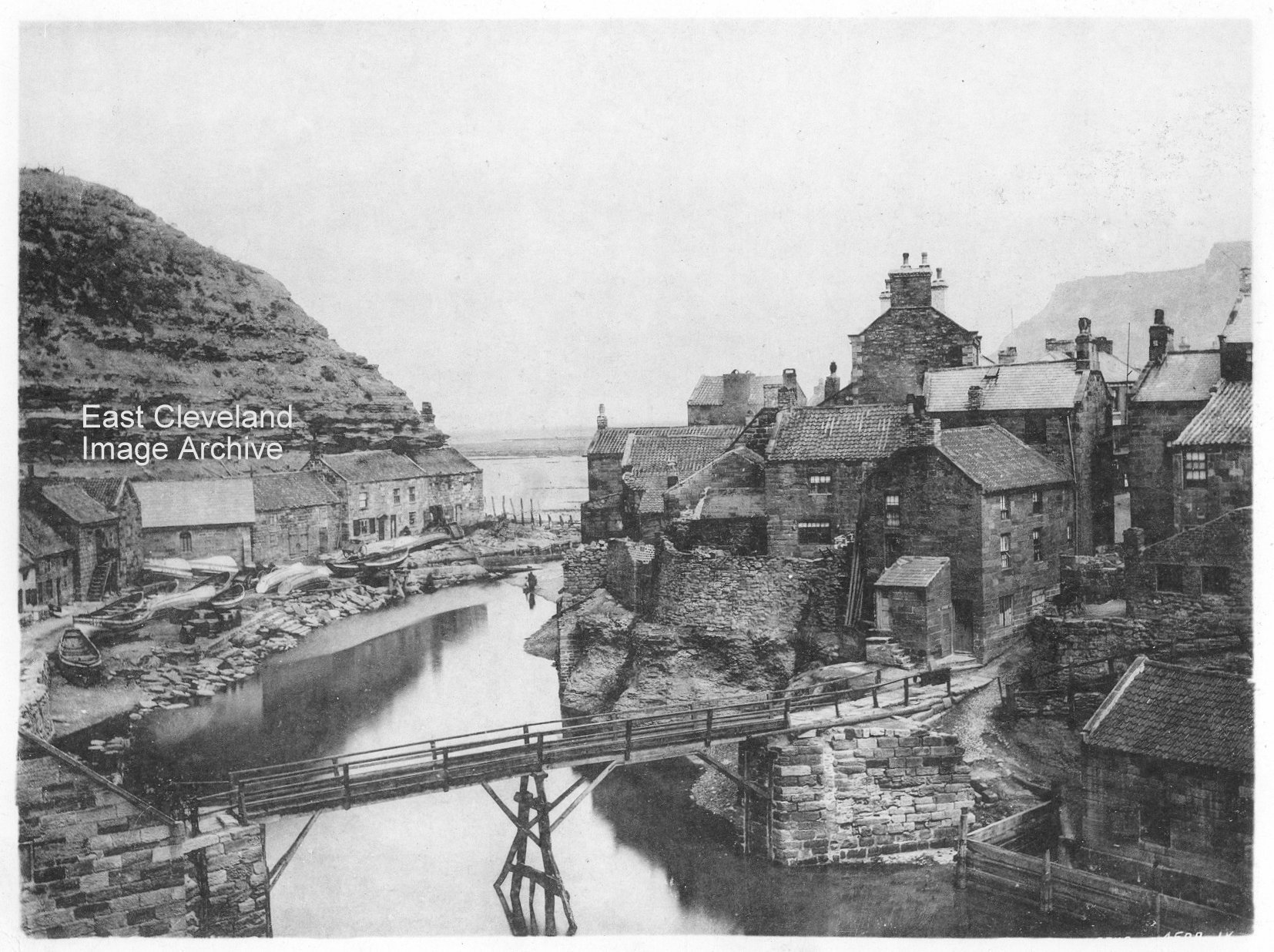
Many people have taken this shot – but only one person has mastered it – Frank Meadow Sutcliffe. This image is from “Photographic View Album of Whitby” – photographed and printed by Valentine & Sons Ltd., Dundee and later used in many of their postcards.
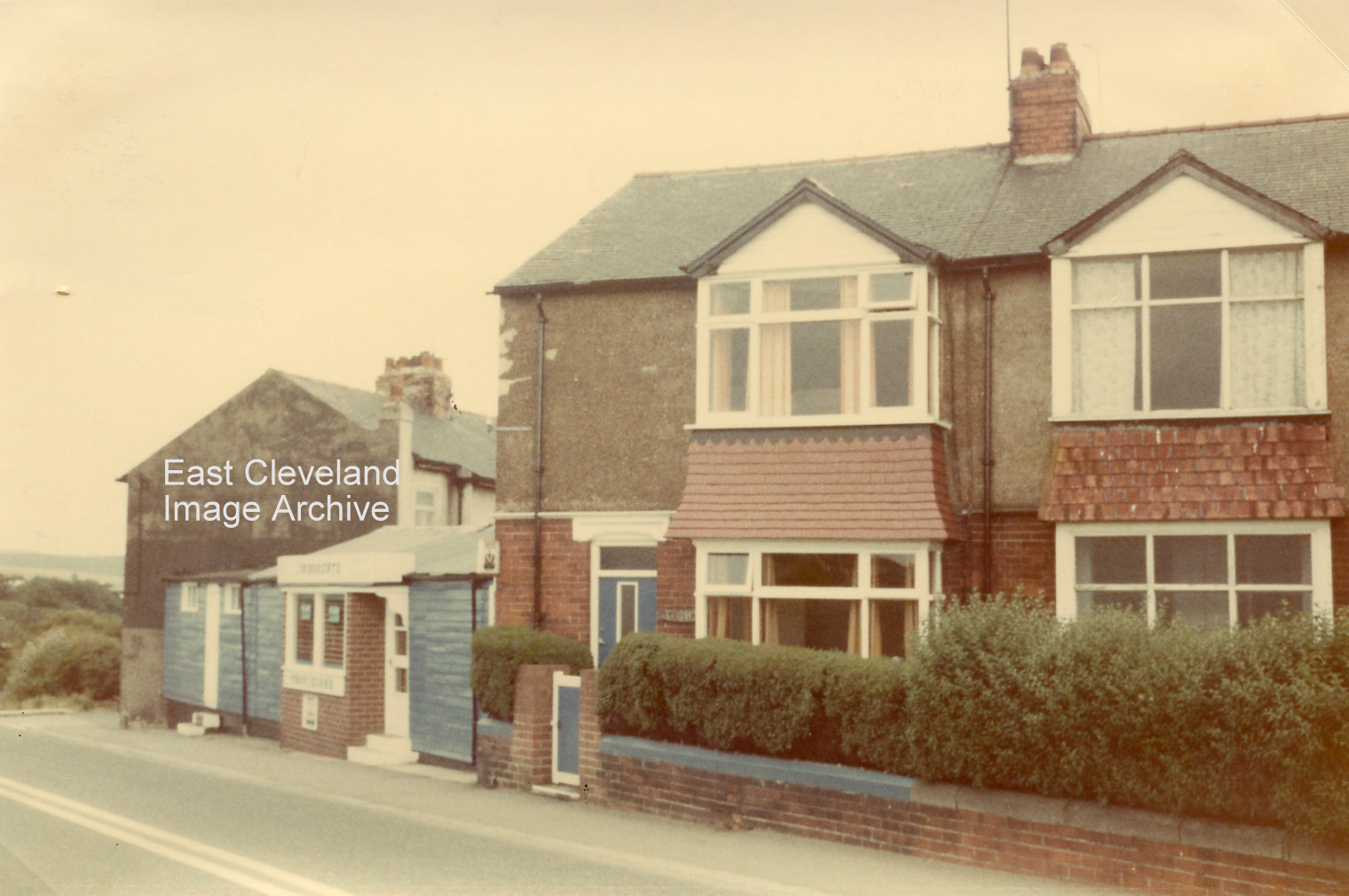
The shop and house in 1984. It changed hands again, once or twice, over the years and the shop has now gone; there’s a garden in its place.
Image courtesy of John Roberts.
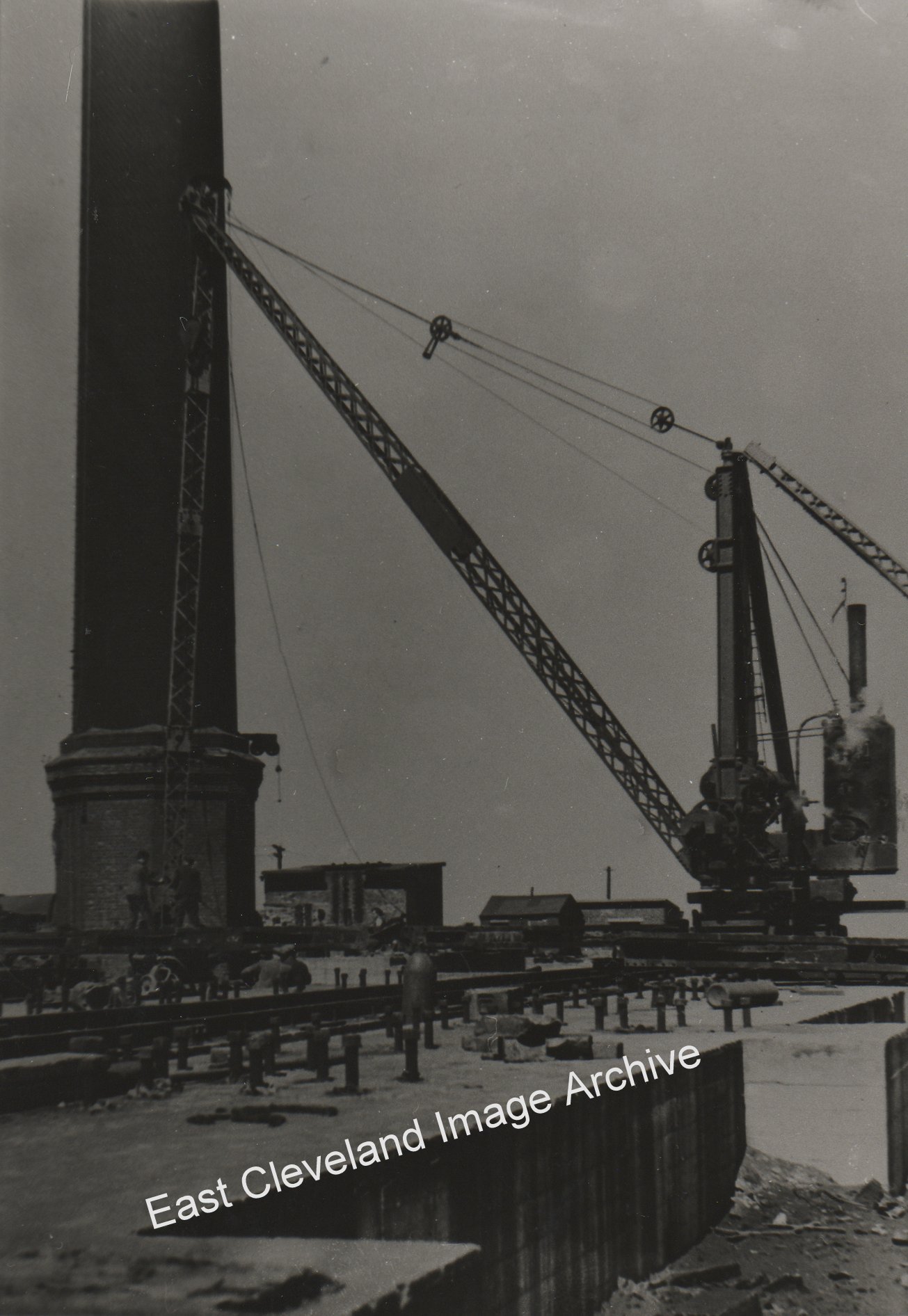
Another unidentified image and this time from much earlier. It appears to be the construction phase of an industrial plant, possibly a steel plant. A beautiful steam crane is being used. Help would be appreciated in trying to identify the period and hopefully the location.
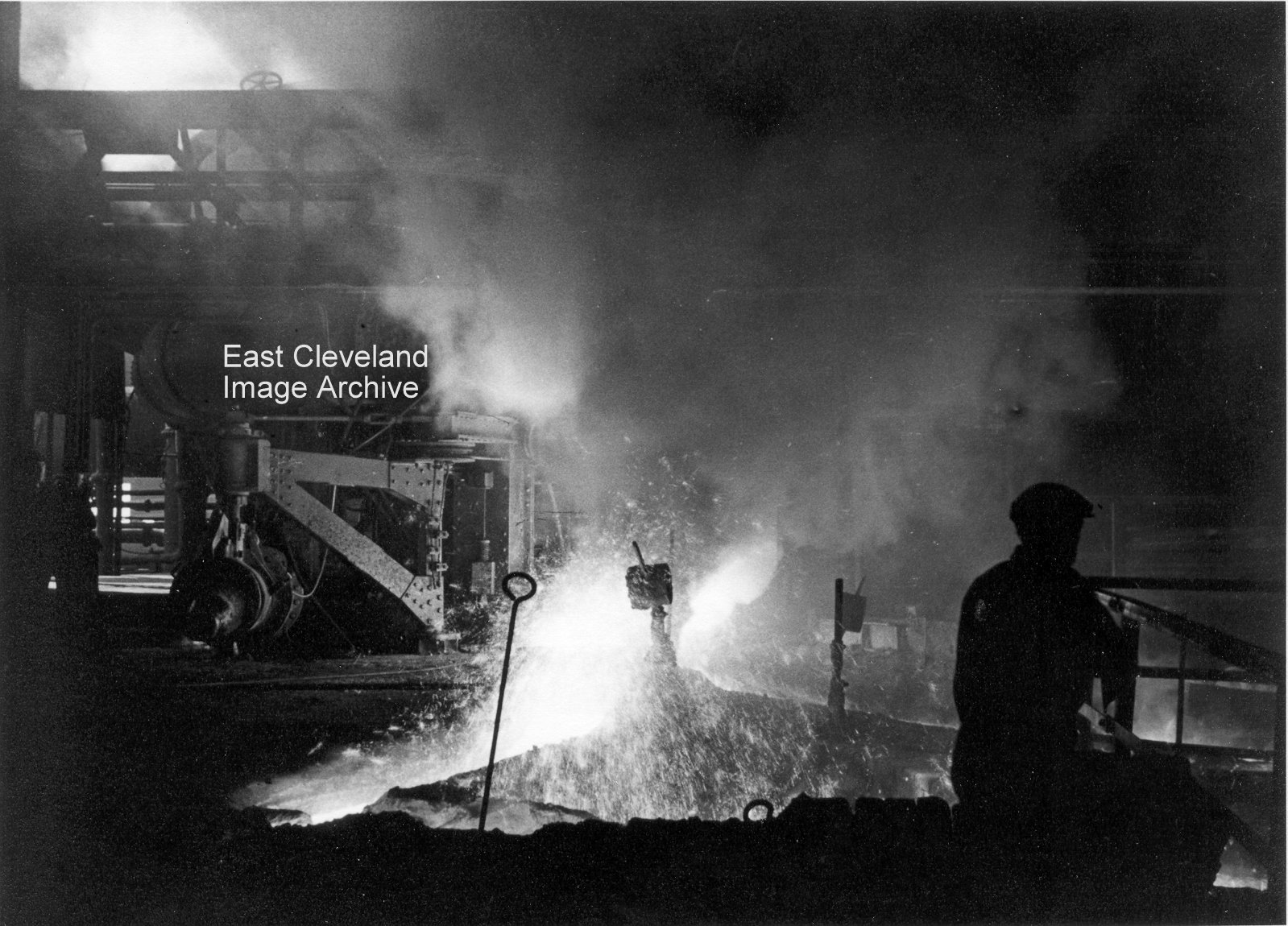
This is a classic shot! It evokes all the memories of what used to make Britain Great. People who worked in Steel for years and looking at this image can still recall the thrill of tapping time on the furnaces at Skinningrove – once you’ve got Steel in your blood it never leaves you! They can feel the heat from the metal in front of the worker on the right and can still remember how cold their back used to feel, when standing and watching the fettling process as a furnace was tapped. Eric Johnson tells us: “The ‘mud gun’ (used to stop the flow of iron when tapping was finished) can be seen on the left; lit by the light from the molten iron.” Above that and running like a band across the image is the ”bustle” which carried the blast furnace gas to feed the furnace. The flag-like objects sticking up in the image were stoppers to stop (or allow) the flow of metal along the runners and into the pots. One of them will be a skimmer used to divert any slag running on top of the iron into a slag pot. This was no place for a stranger to the business – hot, gassy and easy to get in the wrong place! Arthur Ormrod advises us: ”A correction to the comments if I may. The bustle carried the hot blast, preheated air, which was fed into the furnace through the tuyeres, the blast of the blast furnace. Blast furnace gas, carbon monoxide, is collected from the top of the furnace, cleaned, and then used as a fuel in the works, including being burned to heat the hot blast.”
Many thanks to Eric Johnson and Arthur Ormerod for those updates.
|
|










Recent Comments